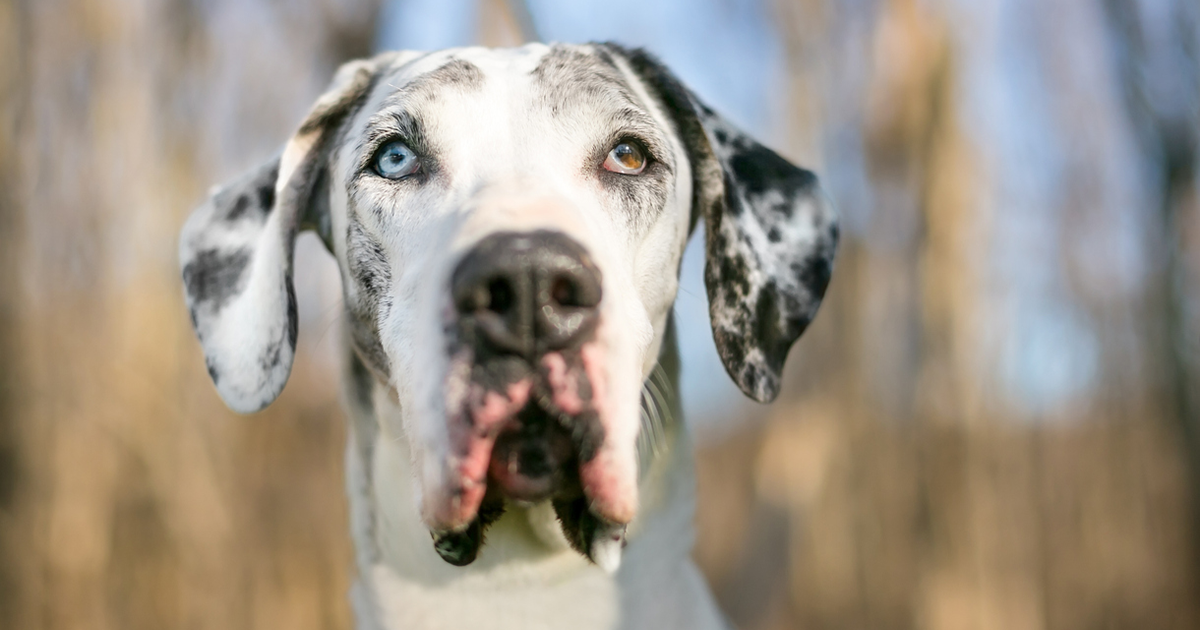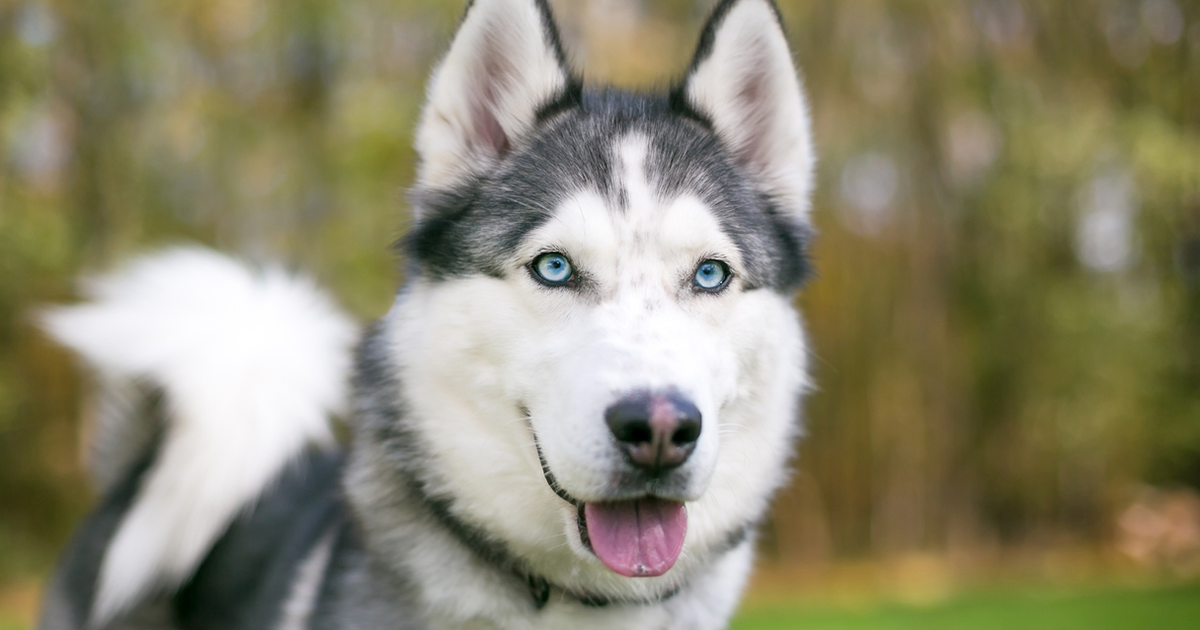Welcome to the BarkPost guide to dog breeds where we belly flop straight into the depths of dog breed origin, evolution, and purpose. Follow along each week as we publish new guides that highlight the strangest, most interesting, and most surprising stuff about these creatures who have been our best buds the last 30,000 years.
Intro / Overview
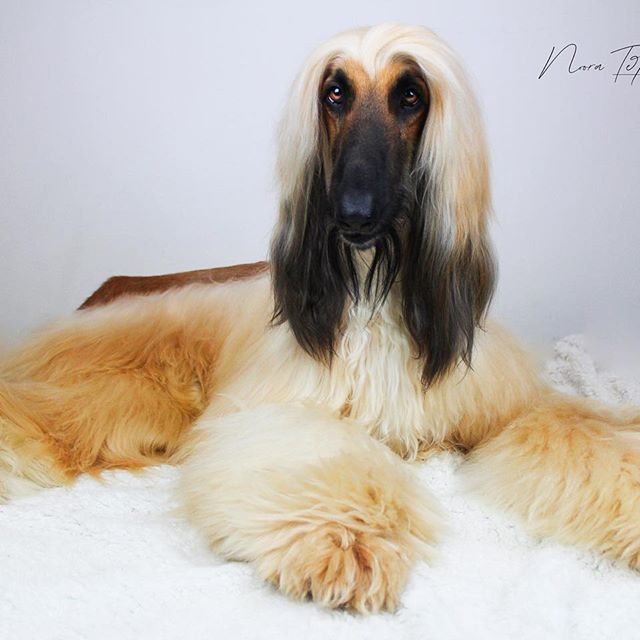

The Afghan Hound is one of the most ancient and beautiful dog breeds. Their days hunting snow leopards left them with a strong prey drive, but these gorgeous sight hounds are much more than just hunters.
Strong, regal, and athletic, the Afghan Hound is a loyal and loving companion with a zest for life. They love to make their humans laugh, and are gentle and silly with children.
Perhaps the most noticeable trait of the Afghan Hound is their silky, flowing coat and elegant beauty. While they require a good deal of grooming, the Afghan’s coat serves a higher purpose: protecting them from the harsh weather of Afghanistan’s snowy mountains.
Also Known As…
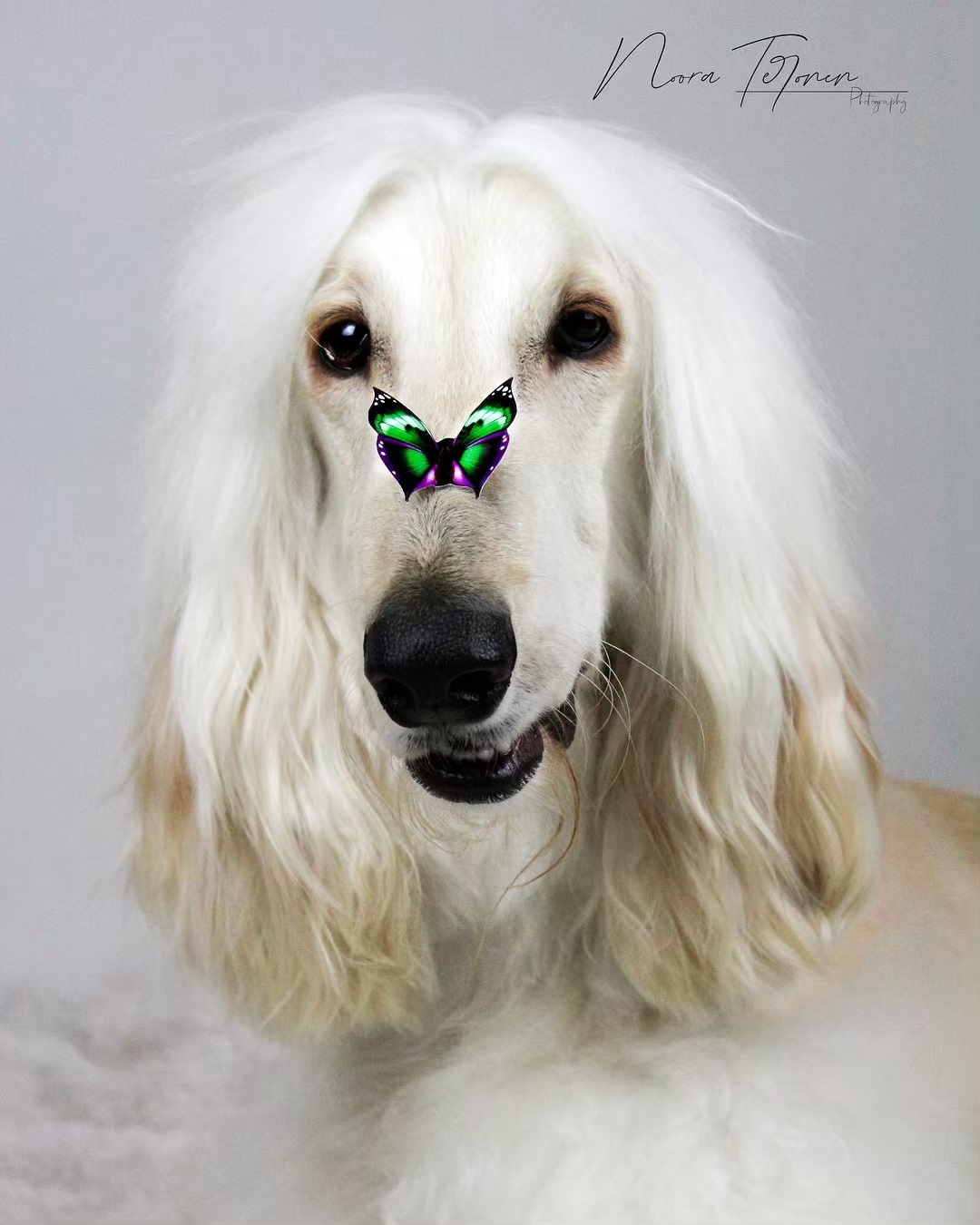

The Tazi Spay in Afghanistan, the Levrier Afghan in the French-speaking world, the Afghanischer Windhund in Germany, and the Ogar Afgan in Romania.
Origins


Afghan Hounds are an extremely old breed. In fact, some believe they are the oldest purebred dogs. One myth even names them as the pair of canines chosen to board Noah’s Ark.
What we know for sure is that the Afghan Hound predates written history. They were likely first bred thousands of years ago in remote areas of Afghanistan, Pakistan, and northern India.
With excellent vision and explosive speed, Afghan Hounds excelled as hunting companions. Their warm thick coats allowed them to endure the biting cold of mountain terrains. In addition, their muscular limbs and ability to run long distances at high speeds made them perfectly suited for hunting rabbits, foxes, gazelles, and even snow leopards.
The Afghan Hound accompanied English officers back from Asian territories in the late 1800s, and was registered by the AKC in 1927. The breed became popular among American dog owners in the 1930s, and have remained so ever since!
Size
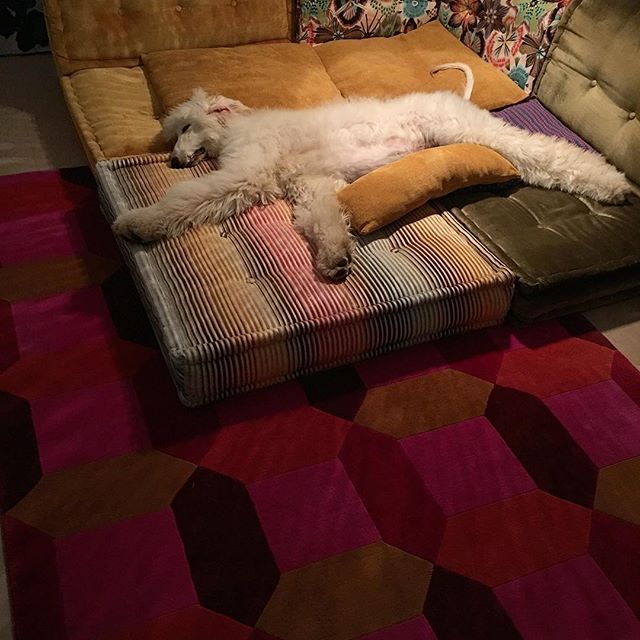

Afghan Hounds grow to be between 25 and 27 inches tall at the withers (highest point of the shoulder area). Females are usually on the smaller end of this range.
Weight Range
Male: 55-65 lbs.
Female: 45-55 lbs.
Personality
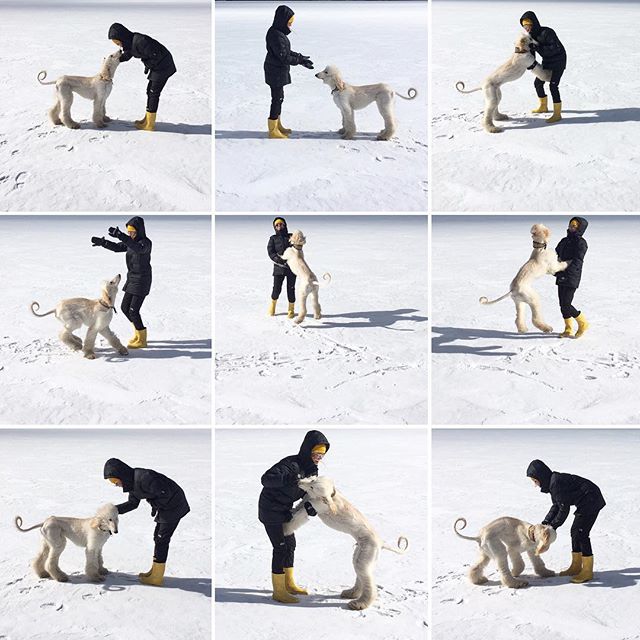

Afghan Hounds have an interesting dichotomy going on. On one hand, they are silly, outgoing, family-oriented companions. On the other, they can be serious, aloof and independent.
The breed is known for their super-playful and clownish puppy stage. They love to entertain, and will do just about anything to get their owners’ attention (even if they have to be a bit naughty)!
Like humans, Afghans tend to outgrow this silly stage as they mature, but having children in the home can help keep the spark alive. Even if your pooch seems to be all business after the age of one, you can rest assured that they will always crave your attention.
Intelligence / Trainability
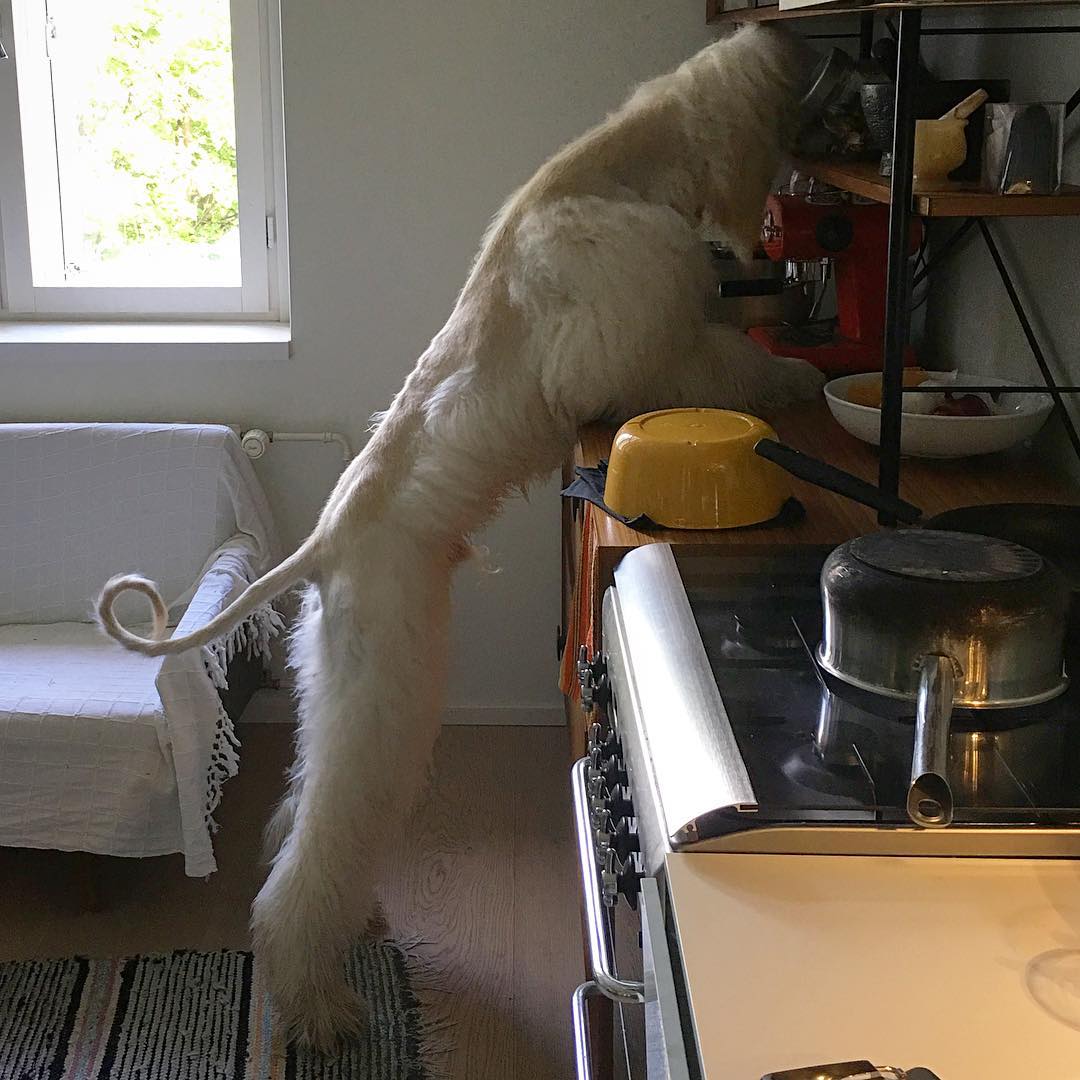

Afghan Hounds are quite intelligent, but their stubborn, independent nature can make them a difficult breed to train. They are very quick learners when interested and engaged in the process. However, if they become bored, they may refuse to obey.
On a positive note, Afghan Hounds’ eagerness to please their humans means they are typically easy to housetrain.
Unfortunately, lovers of the breed say no amount of training will overcome their hunting instinct, so it is important to keep them safely leashed or confined in a fenced area when outdoors.
Best Training Techniques For Afghan Hounds


With their large size and stubborn, aloof nature, Afghans should receive thorough training and socialization as early as possible. This should always be accomplished with positive reinforcement. Rough techniques will only cause your dog to shut down.
The process may take a great deal of patience and perseverance, but the well-behaved pup you end up with is worth the efforts!
Ideal Environment


The Afghan Hound is considered a high-energy breed that requires plenty of exercise to prevent boredom and bad behavior. Experts say they should receive several walks totaling at least a mile or two per day, and have a large, fenced yard for running.
For these reasons, their ideal environment is a home surrounded by several acres of fenced land. However, if this is not possible, an active urban lifestyle will do.
Remember, these dogs have powerful prey drives they simply cannot resist. Allowing them outside without a leash or safety fence is inviting tragedy, and many Afghan Hounds have lost their lives in the road. Not to mention the fact that they may harm or kill neighborhood pets or wildlife.
When choosing a fence, remember that Afghans are tall, lean, and muscular, making them excellent jumpers!
Despite all that, these dogs certainly have their lazy side, and can be excellent partners for vegging out in front of the TV – as long as their exercise needs are met first!
Good for families and kids?
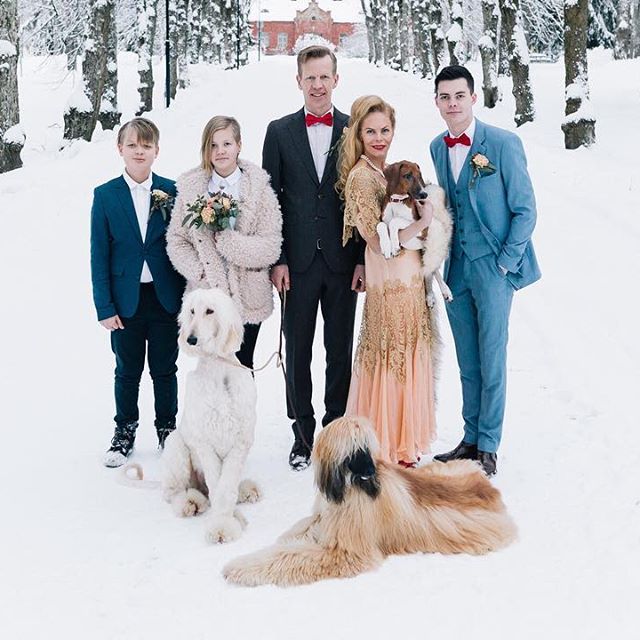

The Afghan Hound is a loyal, loving family dog that is gentle and attentive with children. However, like any large dog, they may accidentally harm small children during play.
Kids should never be left unattended with an Afghan Hound or any other breed. For the safety of the dog and the child, all interactions must be supervised by an adult.
Average lifespan
12 – 18 years.
Health


Like any breed, there are certain health conditions Afghan Hounds are predisposed to. This does not mean your dog will develop any of the following problems, but it is always best to be informed.
- Sensitivity to Anesthesia: Since Afghan Hounds have such low body fat percentages, they tend to be sensitive to anesthesia. Be sure your veterinarian is familiar with sight hounds before booking any surgical procedures.
- Hip Dysplasia: Like many large breed dogs, Afghans are prone to genetic malformation of the hip socket known as hip dysplasia. The condition can cause lameness and painful arthritis.
- Bloat: This life-threatening swelling and twisting of the abdomen occurs mainly in barrel-chested breeds like Afghan Hounds. Owners should educate themselves about what to watch for and what to do should bloat occur.
- Juvenile cataracts: Older dogs often suffer from cataracts, but Afghan Hounds may develop them when they are young. Cataracts cause the lens of the eye to become filmy and opaque which impairs your dog’s vision.
- Hypothyroidism: Low thyroid levels may result in symptoms such as chronic ear infections, bacterial infections of the skin, hair loss, lethargy, and depression. The condition is usually well-maintained with medication and diet.
Energy
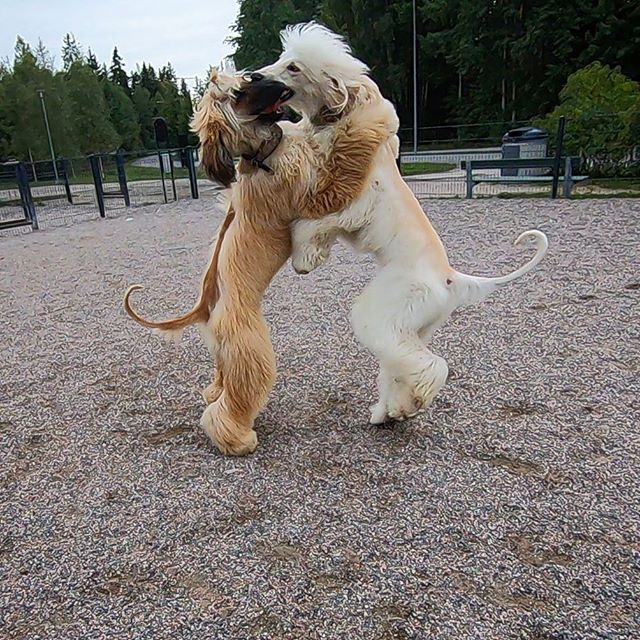

As mentioned above, Afghan Hounds are very high energy and have an insurmountable prey drive. They require more than just the usual walk through the neighborhood as well as safety precautions to keep them from taking off after a cat or squirrel.
Ideally, they should have a set exercise routine involving the opportunity to run and experience new sights and smells. Their intelligence and eagerness to learn make them great candidates for canine sports like agility and nose work.
Friendly with Dogs?
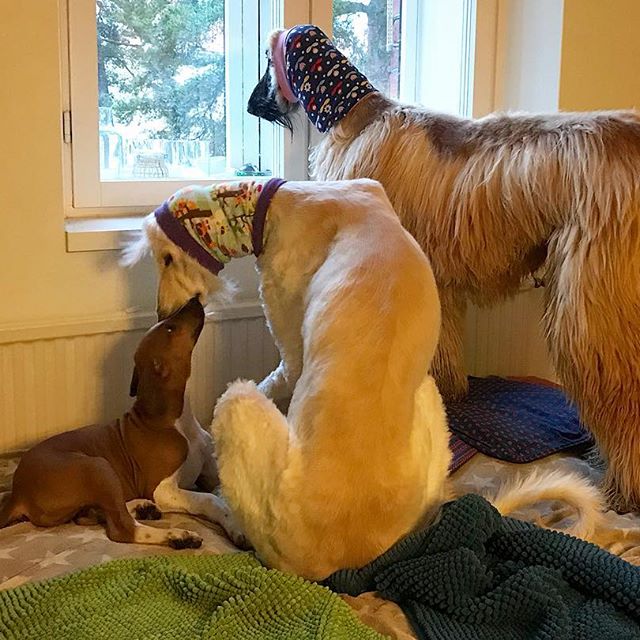

Afghan Hounds are typically sociable with other dogs, but may chase smaller pups that show fear or other “prey” behaviors. They tend to bond closely to other dogs in the home, and enjoy having a live-in playmate.
Strangers?


Afghan fans describe their temperament as aloof or even standoffish with new humans. Although rarely aggressive, they are likely to hurt your guests’ feelings with their utter indifference.
Some hounds may bark to alert you of a stranger’s presence, but this breed is not known for its watchdog skills.
Cats/Other Pets?
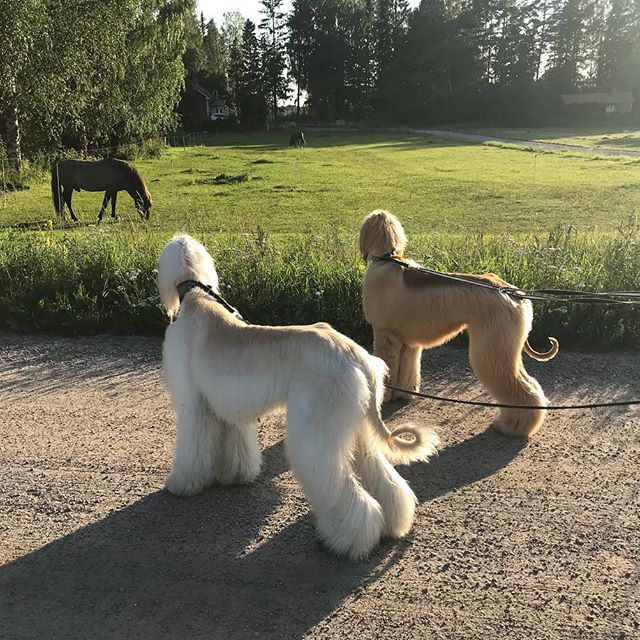

The Afghan Hound can be found on many lists with titles such as “Dog Breeds That Do Not Get Along With Cats.”
While they do have a strong prey drive, they can learn to coexist with other small pets in the home. The key is thorough training with an experienced professional.
Coat and Grooming
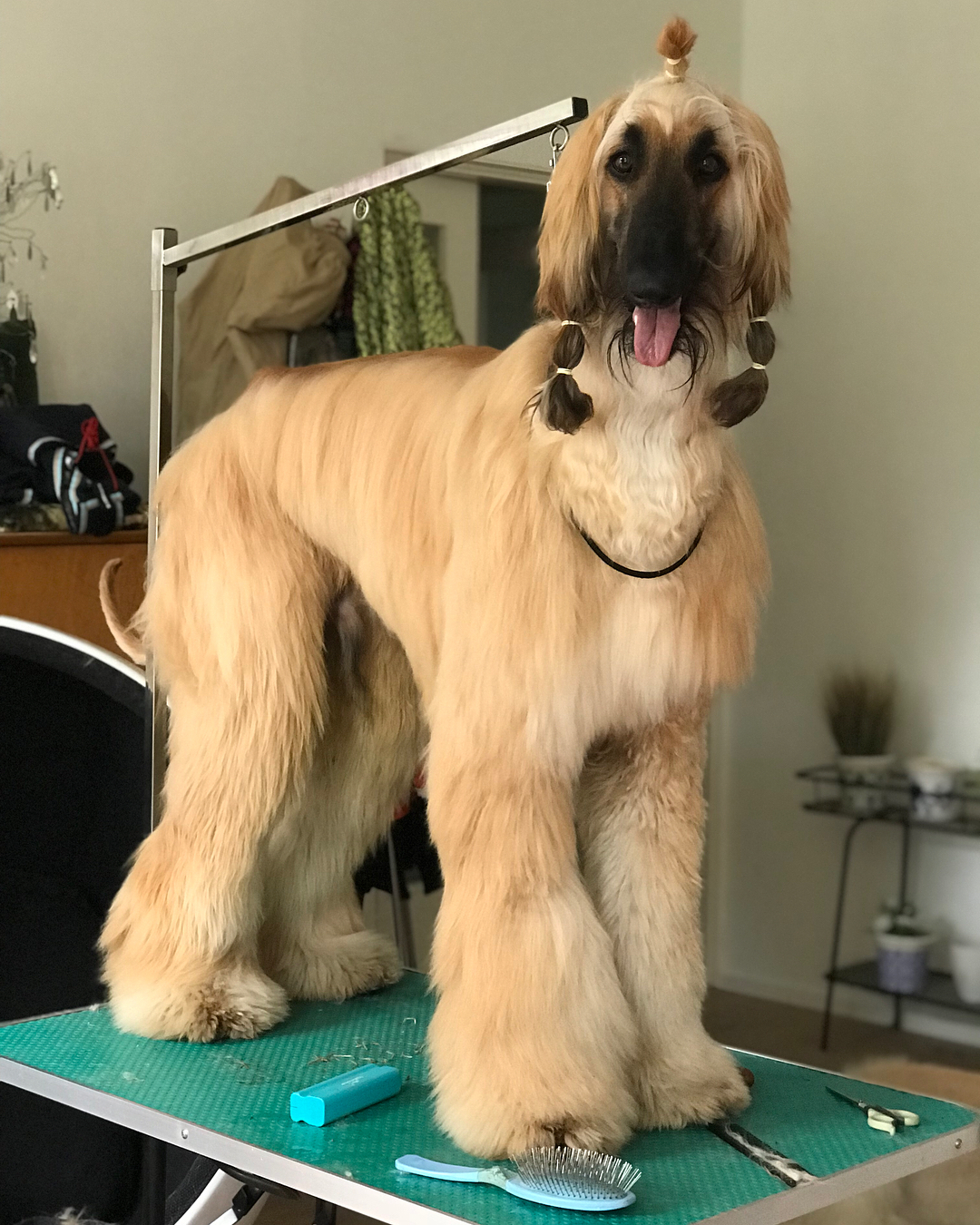

Afghan puppies have very different coats than their adult counterparts. Their hair is short and fuzzy and requires little maintenance.
As adults, however, their coats grow long and silky and require regular bathing as well as daily brushing to prevent mats and tangles.
Their hair is very fine and they have a lot of it, so a high-quality canine conditioner is a helpful addition to your Afghan grooming routine.
On a positive note, they are very low shedders.
Quirks/Fun Facts
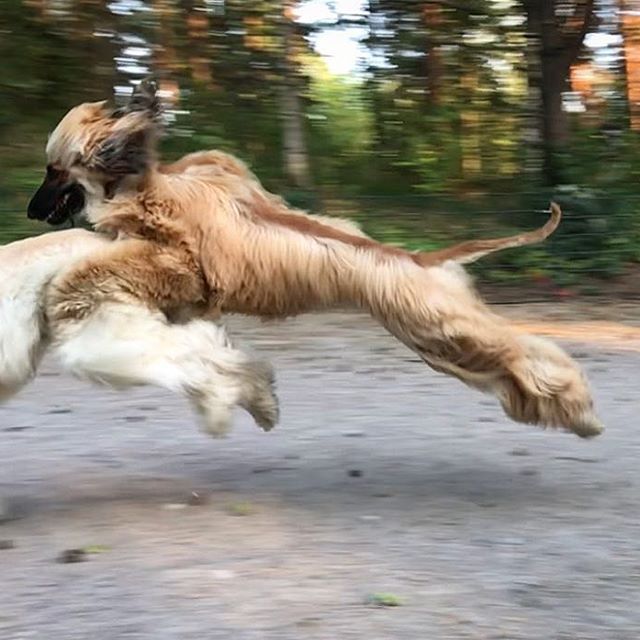

- Afghan Hounds can run up to 40 miles per hour. That’s as fast as a purebred racehorse!
- The adorable facial hair of Afghan puppies is known as “monkey whiskers” – how cute is that?!
Toys Afghan Hounds Would Like Best
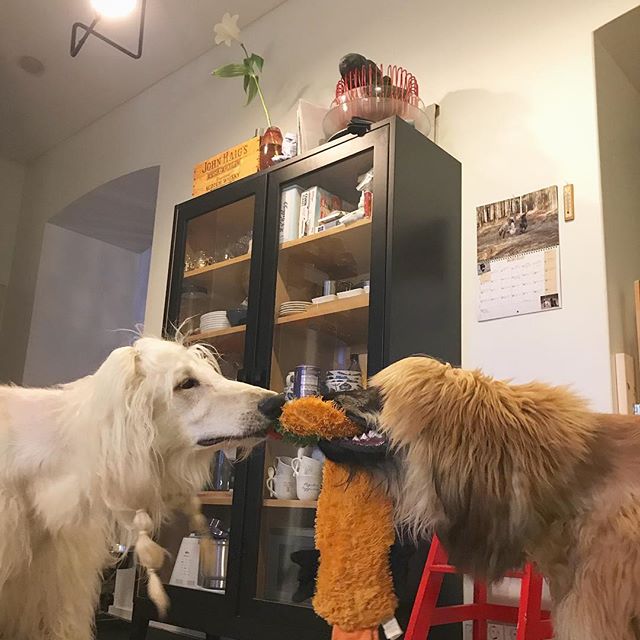

With their incredible speed, high energy, and desire to chase small creatures, Afghan Hounds adore durable fetch toys they can chase down and “kill” over and over again. Those that make a delightful squeak are even more desirable.
Additionally, thinker toys or puzzle toys are excellent for keeping active, intelligent dogs busy when you cannot be with them.
Finally, indulge your Afghan’s cuddly side with a plushy toy he can snuggle.
Check out this roundup of toys for the Afghan’s sighthound cousin, the Greyhound.
Recommended Diet or Supplements
Choose a high-quality, age-appropriate (puppy, adult, or senior) dog food approved by your veterinarian, or prepare your own balanced home-made diet.
Afghan Hounds naturally have very low fat stores and protruding hipbones which is perfectly natural for the breed. However, extremely active sighthounds, such as those involved in canine sports may require additional calories to replenish their energy stores.
Because they are also at risk for bloat, talk to your vet about when and how to feed your Afghan Hound. Believe it or not, exercise, quantity, and the type of bowls you choose can all impact their risk for this deadly condition.
As for supplements, Afghans are at risk for arthritis and other painful joint conditions. In order to help prevent and treat these issues, start your pooch on a joint care supplement as soon as he or she reaches full skeletal growth.
Glucosamine Supplement For Hip & Joints
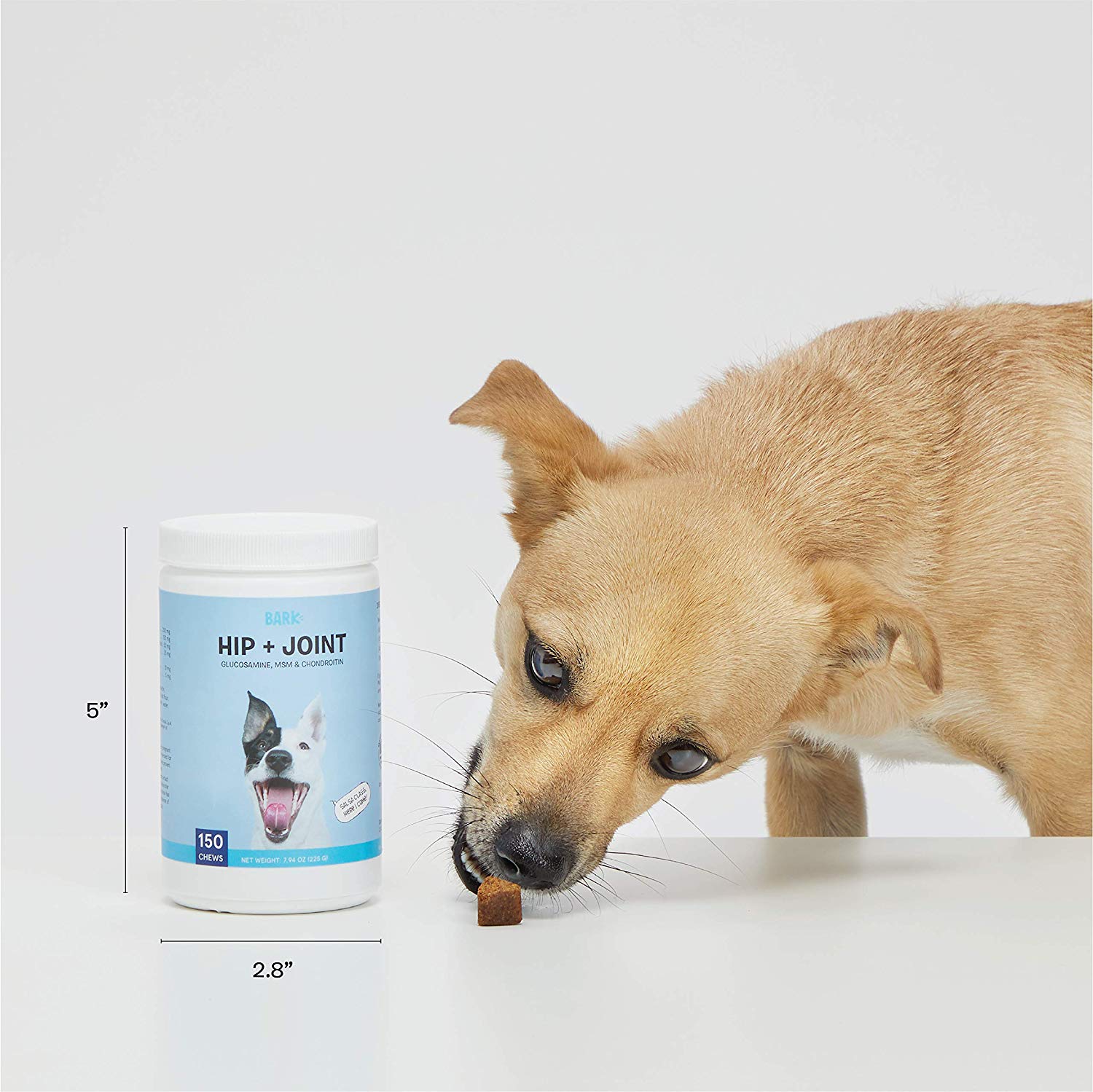

Bark Hip + Joint soft chews are veterinarian-formulated in the USA with powerful ingredients like glucosamine, MSM, chondroitin, and hyaluronic acid to keep your dog’s joints strong, flexible, and pain-free. ($32.99.)
Additionally, full spectrum hemp oil may help Afghan Hounds deal with chronic pain related to hip dysplasia, as well as any anxiety they may experience when separated from you.
Full-Spectrum Hemp Oil
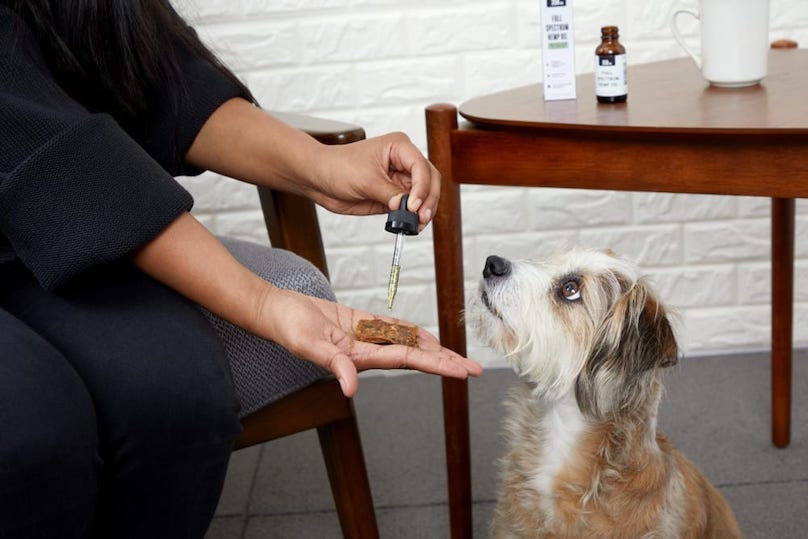

BARK’s Full Spectrum Hemp Oil is made of organically grown whole plants, grown in Colorado, and is non-psychoactive. ($17.99-22.99.)
Recommended Products
Orthopedic Ultra Plush Memory Foam Dog Bed
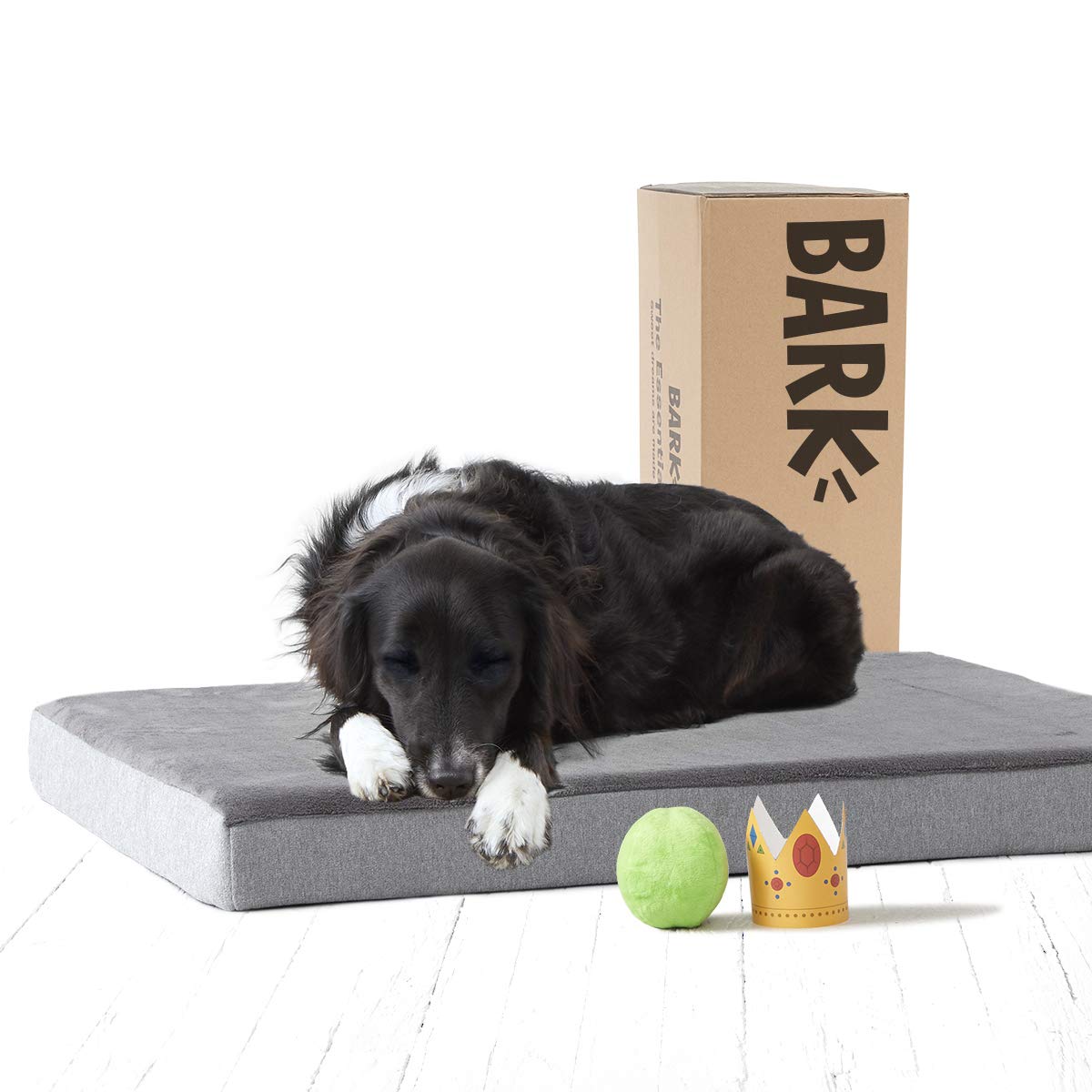

Orthopedic dog beds from Bark are made with ergonomic memory foam and gel foam to cradle joints and relieve the stress on pressure points. They help ensure your Afghan Hound gets a good night’s sleep, free from body aches. Just be sure to order the XL! ($64.99.)
Notable Rescues to Find The Afghan Hound Of Your Dreams
- Afghan Hound Club of America National Rescue
- Afghan Hound Rescue of Southern California
- Northern California Afghan Hound Rescue
- Rescue Me! Afghan Hound Rescue
- North East Afghan Hound Rescue
- Seattle Purebred Dog Rescue
Notable Instagram Afghan Hounds
Herman, Jacob & Yoda @Herman_The_Afghan_Hound
Honey The Afghan Hound @hunneygram
Shai & Adar @Adar_Afghan_Hound
Gypsy the Afghan Hound @Afghan_Adventures
***Looking for a gift to blow your Afghan Hound’s mind? Spoil them with BarkBox! Every month BarkBox delivers 2 original toys, designed in-house, 2 full bags of all-natural treats, and a chew. Sign up here and receive a free extra toy every month. <– This deal is worth up to $120 in value if you sign up for a 12-month subscription! 🙂
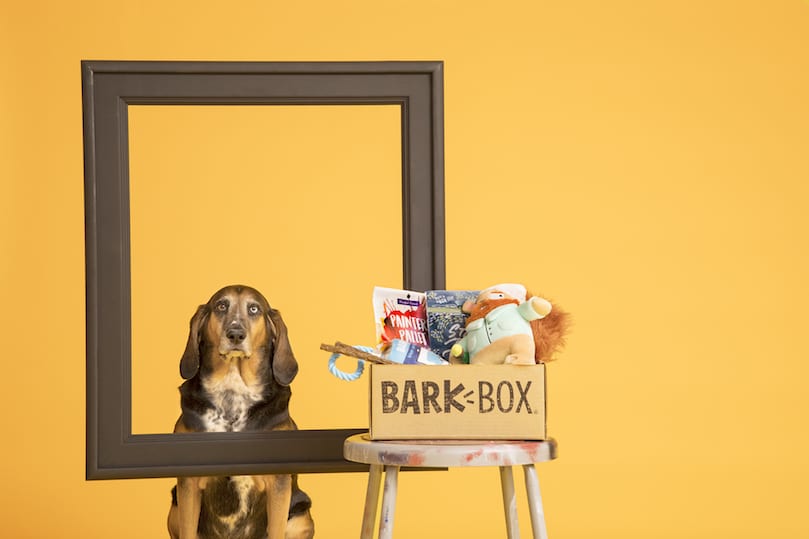

Featured image via Herman_the_Afghan_Hound/Instagram
Want More Breed Guides Like This?
Basenji Breed Information Guide


